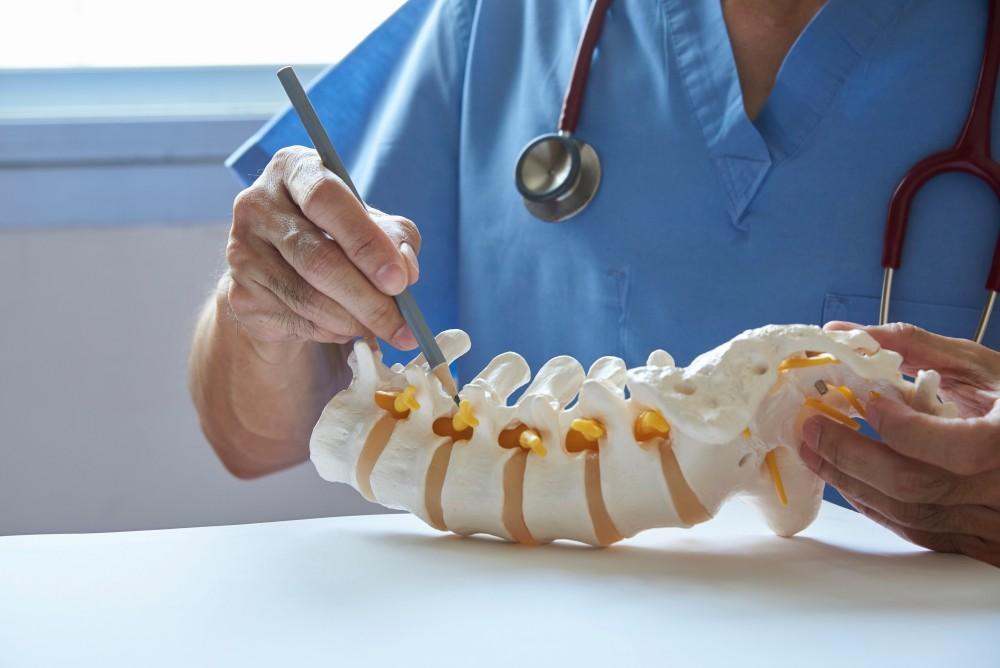
5 Common Signs of a Compression Fracture

Osteoporosis is a disease of the bones that causes them to become weak and brittle—so brittle that even mild stress on the spine, such as bending over or coughing, can cause the bones to spontaneously break, known as compression fractures. Osteoporosis-related breaks usually happen in the hip, wrist, or spine.
Bone is constantly in a state of flux, being broken down by one set of cells only to be built back up by another set of cells. When the new bone formation doesn’t keep up with the old bone degradation, osteoporosis is the result.
Osteoporosis affects both men and women of all races. However, the groups at highest risk are postmenopausal white and Asian women. Currently, more than 53 million people in the United States have osteoporosis or are at high risk of developing it.
At Vertrae®, board-certified neurosurgeon Dr. Kamal R. Woods addresses osteoporosis by performing a kyphoplasty procedure using spinal surgery, minimally invasive spinal surgery, or robot-assisted surgery.
Many people aren’t informed about osteoporosis and compression fractures, so Dr. Woods wants to take this opportunity to describe them in detail, including the common signs that indicate they need medical help.
What is osteoporosis?
Like most things in life, body parts slow down and break as you get older, and that’s absolutely the case with bone mass and density. Most people reach their peak bone mass by age 30. After that point, bone tissue is lost faster than it's created, and by your mid-40s, a cross-section of your bone will look more like Swiss cheese than a honeycomb.
The likelihood you’ll go on to develop osteoporosis depends partly on how much bone mass you had when you were young, a figure that’s partly inherited and partly varies by ethnic group. The higher your peak bone mass, the more bone you have as a buffer against the disease.
What is a compression fracture?
If you don’t get appropriate treatment for osteoporosis, it can get worse. The bones get thinner and weaker, and your risk of sustaining a fracture increases.
If you experience ongoing back or neck pain or a distinct loss of height, you may have a compression fracture. It’s a break in one of the vertebrae in your neck or back that comes from the normal pressure on it from the spine above.
How long it takes to heal a spinal fracture depends on many factors, including where in the spine the fracture is located, how severe the break is, your age, and your health history.
5 common signs of a compression fracture
These five signs are the most noticeable:
- Severe neck or back pain that started spontaneously or from a fall
- Pain is located in the thoracic (chest) spine
- Loss of height
- Difficulty bending or twisting
- A stooped spine (kyphosis)
If you experience any of these symptoms, you need to come into Vertrae® for an evaluation.
Treating a compression fracture
Most people who have a spinal compression fracture don’t require surgery. Medication, a custom-fitted back brace, and a combination of exercise and activity modification can help relieve pain and allow you to remain active.
Many compression fractures heal within 2-3 months. It may take as long as a year to recover fully if you have osteoporosis.
To allow the bone time to heal, Dr. Woods may recommend that you avoid all high-impact activities and any bending, twisting, or lifting motions.
However, you shouldn’t remain sedentary until the fracture heals. Low-impact activities like walking, water exercise, or tai chi are good for your heart. A healthy circulatory system also increases blood flow to the fracture and helps the bones heal faster.
Staying active also minimizes your chances of developing blood clots or deep vein thrombosis (DVT) in your legs.
It’s usually best to avoid physical therapy soon after the fracture occurs, as it would increase stress on the fractured bone. Once the bones are more stable, PT helps strengthen the muscles that support the vertebrae.
If you know you have osteoporosis and want to prevent a compression fracture, or if you’re dealing with such a break right now, Vertrae® can help. Call our office at 844-255-2225 or book online today to schedule an evaluation with Dr. Woods.
You Might Also Enjoy...


How to Alleviate Chronic Back Pain Without Surgery

Using Your Own Platelet-Rich Plasma to Alleviate Your Back Pain

A Closer Look at Your Sacroiliac Joint

4 Benefits of Outpatient Spine Surgery

